
11 minute read
PMS – The uninvited monthly guest
PMS
THE UNINVITED MONTHLY GUEST
BY DIANA ARUNDELL UNIVERSITY QUALIFIED NATUROPATH
Hormones play an important part in our body’s orchestra of health and wellbeing. They are important in their role in the growth and reproductive systems in both men and women but also impact many other systems of the body. Hormonal imbalance can show up as mood disorders including anxiety and depression, as well as sleep disturbance, fatigue and digestive disturbance, with symptoms ranging from mild to debilitating.
Premenstrual syndrome (PMS) refers to signs and symptoms experienced leading up to and during menstruation. 75% of women experience PMS to a greater or lesser degree and it appears rather than there being just one simple cause, there are a number of contributing factors to PMS including diet, lifestyle and an imbalanced rising and falling of hormones such as oestrogen and progesterone. PMS is common but does not need to be inevitable.
The menstrual cycle can provide a lot of information about a woman and her health. The monthly period (or absence of it) and the presence of PMS can be considered a ‘report card’ for the month on how health, wellbeing and hormones have been travelling.
The more common symptoms and signs of PMS include breast tenderness, bloating, mood swings (irritable, anxious, depressed) sleep disturbance, acne, headaches and food cravings. For some women these are noticeably mild and may last 24–48 hours, whereas for others these signs and symptoms may be so pronounced that they can hardly recognise themselves amidst it and symptoms may stretch out to 2 weeks before the period comes. It’s really important to track your menstrual cycle each month so it’s evident if the symptoms are cyclic and therefore more likely to be related to the menstrual cycle, or if there is no obvious repetitive pattern, then other causes need to be investigated.
Premenstrual dysphoric disorder (PDD) is severe premenstrual mood disturbance of depression and/or anxiety.
A woman’s menstrual cycle through each month can almost feel like passing through the 4 seasons. The monthly period and few days before feels more like winter when we tend to be a little quieter and homely. The energy improves as spring comes during which we move to the end of our period and transition into summer around ovulation. Things begin to wind down again through the autumn part of our cycle leading up to our winter period time again. It is natural to experience different levels of energy throughout the seasons of the menstrual cycle and unrealistic to expect ourselves to be bouncing out of our skin with energy 24/7 all month.
Do you want more children? Or no way, nuh-uh, not again! Have you thought of your options? Have you considered a vasectomy?
Vasectomies are a permanent and very effective way to stop unwanted pregnancies. They are performed under local anaesthetic and have a quick recovery time. For more information regarding the procedure, fees or any other issues of concern please visit our website or contact our friendly staff.

30 Renwick Street Wyoming Phone: 4328 2122
www.cornerfamilysurgery.com.au
PIANO SAXOPHONE CLARINET Taking enrolments now for 2022 Phone 4346 4775 info@avocamusictuition.com.au avocamusictuition.com.au
Things that may contribute to PMS include: Unresolved stress – physical, mental or emotional (stress hormones and reproductive hormones are intricately related) Weight loss or weight gain Low iron status (can be both a sign and a cause of an excessively heavy period and period pain too) Smoking (smokers are twice as likely to experience PMS) Insufficient intake of dietary protein and vegetables (especially cruciferous family such as broccoli, cauliflower, cabbage, brussels as these support healthy oestrogen metabolism) Too high intake of stimulants such as caffeine, sugar and alcohol may exacerbate PMS especially if consumed 2 weeks prior to menstruation Too much or too little exercise Hormone imbalance – the rise and fall of oestrogen and progesterone need to be in balance.
The coming and going of oestrogen through the cycle is necessary for ovulation and simulating other hormones required for a functional cycle. We need some oestrogen as it helps us feel good, but not too much as it then becomes too stimulating and can contribute to many of the PMS symptoms. Lara Briden describes oestrogen as “that interesting and charismatic friend who’s great to have around but can be become a bit overwhelming if she stays too long”. The drop in oestrogen towards the end of the cycle can contribute to moodiness as it contributes to a drop in serotonin and dopamine too which are ‘feel good’ neurotransmitters.
The ability to produce sufficient progesterone is important as it helps shelter from dramatic changes due to the rising and falling of oestrogen. It is also relaxes the nervous system by enhancing the production of the calming neurotransmitter GABA.
If changes in diet and lifestyle don’t reduce PMS signs and symptoms after three cycles then herbal medicine and supplements may be beneficial to support and nudge the body back into balance. Professionally prescribed supplements are more likely to have a positive impact than over the counter options as they will be specifically tailored to the individual, including therapeutic doses and correct timing of dosage. Nutrients that may help ease PMS include: Magnesium, B6 (pyridoxine), Iron, Zinc and the herb Vitex agnus castus.
The oral contraceptive pill (OCP) is often prescribed to ‘regulate your cycle’ or ‘balance your hormones’. Although the OCP is good for birth control, it actually does not regulate ‘your cycle’ or balance ‘your hormones’. It takes over your hormones and runs the show. The ‘regular’ period you appear to have each month is not ‘your period’, it’s more accurately a withdrawal bleed from the hormones that have been delivered to the body via the OCP during the month. Most likely when the OCP is stopped, the body will revert to it’s natural hormone state prior to the use of the OCP. With regards to giving short term symptomatic relief for PMS, some women find it helps and others find it exacerbates the signs and symptoms. In any case it doesn’t address the underlying cause.
Understanding hormones and their intricate balance can be a complicated journey so it’s always best to work with a health professional to help sift through the confusion. Lara Briden’s book ‘Period Repair Manual’ is an excellent reference book for understanding the menstrual cycle and natural approaches to treatment.

For further information or to make an appointment, contact Diana Arundell – The Avoca Naturopath and Nutritionist on 0410 465 900.
Diana Arundell is a university–qualified naturopath and consults from her Avoca Naturopath clinic. She has a special interest in fertility and pregnancy health, digestive health, immune function and family wellness programs. She was a nutrition lecturer at Macquarie University for 10 years, and is an accredited Journey Practitioner. For further information or to make an appointment please contact Diana Arundell at Avoca Naturopath on 0410 465 900. B.H.Sc (comp medicine) B.A., N.D., Dip. Nut, D.R.M.
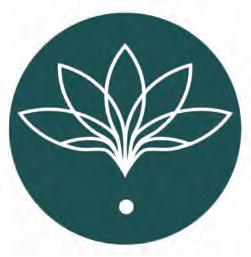
Nutrition Herbal Medicine Fertility Management Children’s Health Wellness Programs 0410 465 900
avocanaturopath.com.au
naturopathdiana@gmail.com nutrition and wellness | herbal medicine | fertility | children’s health 118 Avoca Drive, Kincumber B.H.Sc (comp medicine) B.A., N.D, Dip. Nut, D.R.M.
More than just sport
BOOK YOUR FREE TRIAL NOW!
We are Australia’s largest multi-sport program for 1.5–6 year olds!
• Learn the basics of 10 great sports • Low child/coach ratios • Physio-designed & FUN!
readysteadygokids.com.au | 1300 766 892
Find us on Facebook | Franchise opportunities available
Orthodontics DENTAL AT LAKE HAVEN and kids If you’ve grown up with crooked teeth, an overbite or maybe even overcrowding, it’s likely you have considered getting braces to straighten your teeth. Or if you have children, your dentist may have recommended that your child needs braces.
What is Orthodontics ? Orthodontics is a dental speciality focussing on correcting teeth and jaw irregularities and improving their function. This can include straightening teeth and correcting misaligned bites through the use of orthodontic appliances and braces.
There are several types of treatments available to orthodontic patients. Traditional braces are the most common type of treatment and are capable of performing large tooth movements, making them suitable for most cases. Ceramic or clear braces work in the same way as metal braces, only they use clear or tooth–coloured ceramic brackets and wires, making them a subtler option for adults.
Clear aligner treatment, such as Invisalign®, uses a series of removable plastic trays to gently move the teeth into a new position. This type of treatment requires diligence on the part of the wearer as they must be worn for at least 22 hours a day to be effective.
So when should my child have Orthodontics ? Parents can take pre–teens to see a dentist trained in orthodontics for an assessment if concerned about crooked teeth or the effects of bad habits such as thumb sucking. Some treatments for your child would start by age 7, so it’s a good idea to have regular check ups as soon as possible to help your child become comfortable with your dentist and their ongoing treatment plan. There is no ideal age to begin orthodontic treatment for adults, with many now undergoing treatment later in life.
How long will treatment take ? This is dependent on the type of treatment you require and the movements your teeth need to complete. While some people can complete a full course of treatment in six months, for most people it usually takes between one and two years.
Can I straighten my own teeth ? It is recommended that you only undertake orthodontic treatment under the supervision of a trained dentist who can properly assess your treatment outcomes to ensure it is performed safely.
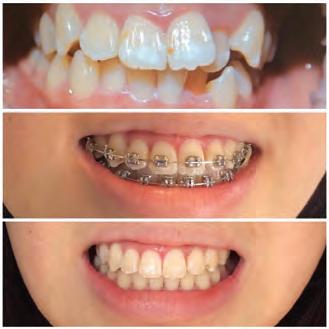
Enhancing, not changing, your natural beauty with Dr Shauna Watts

You by Dr Shauna Watts Signature Treatment includes: • A Rationale Cosmeceutical Peel • A Laser Genesis Full Face Treatment • A MediLUX LED Light Treatment • And... a relaxing hand and arm massage from our experience dermal therapists
To book your You by Dr Shauna Watts Signature Treatment, call the clinic on 02 4302 8390.
Located at The Quarters.
A bespoke retail, accommodation, wellness and events destination at Forresters Beach.
@youbydrshaunawatts
Unsupervised treatment that can be bought online can be dangerous, and may result in damage to the teeth, gums or jaw and you cannot determine the outcome of straight teeth.
Clear aligners (invisible braces) vs braces As the name suggests, invisible braces, such as Invisalign®, are designed to adjust your teeth without being seen. They achieve this invisible look with aligner trays made of BPA–free plastic, which sit comfortably over your teeth. A series of plastic aligners are provided to the patient, with each aligner designed to slowly and subtly move your teeth into the correct place.
On the flip side, traditional braces are made up of metal brackets that are bonded to your teeth, and then connected by wires and rubber bands. The brackets on the teeth are tightened every four weeks or so to align the teeth.
Are clear aligners & traditional braces effective in all cases? Both types of braces are designed to effectively treat your orthodontic problem and ultimately, leave you with straight teeth. However, the severity of your case will ultimately determine which type of braces will be more effective.
For more simple cases, such as crowded teeth, crooked teeth, overbites, underbites, open bites and gapped teeth, both invisible braces and traditional braces can be an effective treatment option.
However, with more severe problems such as malocclusions, extremely crooked teeth or cross bites, traditional braces are a more effective choice, as they are designed to provide more specialised alignment and treatment. Using the bonded metal brackets, wires and bands, traditional braces can adjust the teeth in a way that invisible braces may not.

What happens at my first appointment? At your complimentary consultation appointment we will scan your teeth using an iTero scanner and simulator where you can take a sneak peek at what your smile could look like with straighter teeth. We can answer your questions and discuss how long your orthodontic treatment will take and the costs involved.
Contact us today for your complimentary consultation with Dr Jimmy Rao – Dental at Lake Haven & Dental at Kanwal (02) 4393 0020
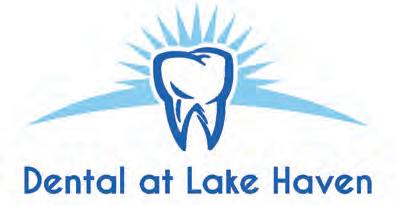
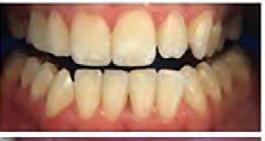
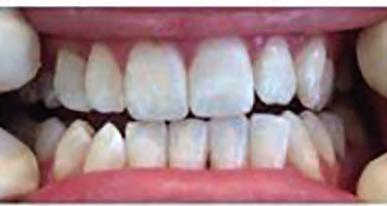

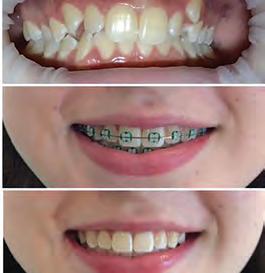
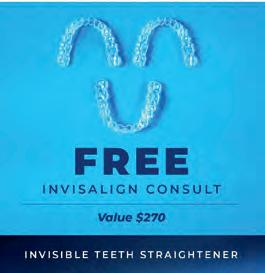
Smile Makeovers Veneers Same Day Crowns Braces Dental Implants Teeth Whitening Complimentary Consultations for Braces & Implants
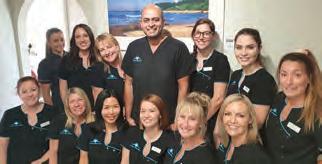
76 Goobarabah Ave Lake Haven (opposite Red Rooster)
CALL 4392 6466 OPEN MONDAY TO FRIDAY





